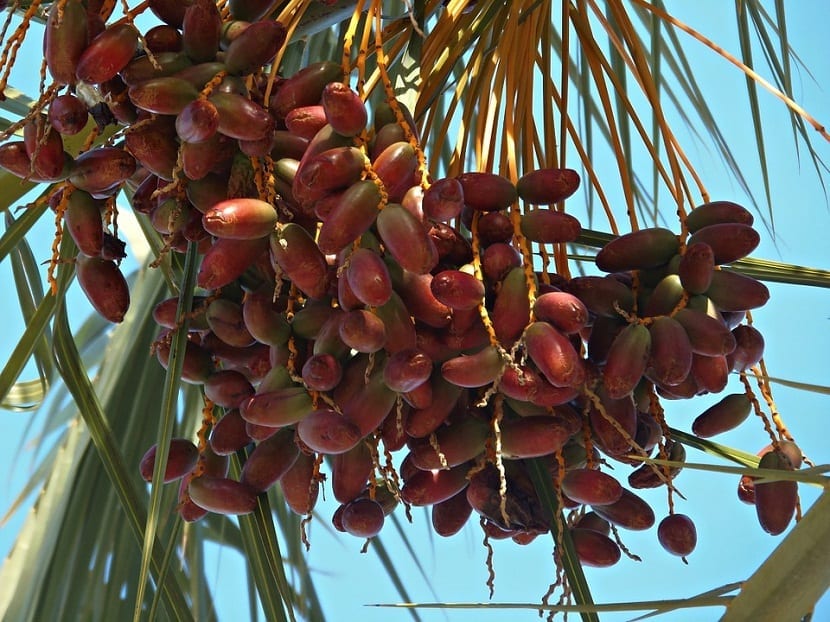
The date (Phoenix dactylifera) is a fruit of the date palm, considered the most characteristic fruit of North Africa, Arabia and arid regions of the Mediterranean.
Its presence has spread to almost the entire world and often accompanies other nuts at banquets. Dates are so precious that even in the Bible they are mentioned and it is believed that is the oldest seed in the Middle East which is still cultivated today.

Features
The date palm can reach up to 30 meters high and two meters in diameter and from the palms hang dates, which are ovoid-shaped fruits, about 4 to 10 centimeters long, sweet and fleshy pulp and both the peel and the pulp are usually yellow, orange or red.
Services
Although they are usually seen only as an exotic fruit, in fact dates should be a regular part of the daily diet because their properties are unique:
Dates are easily digestible, helping to maintain the digestive rhythm
They contain a lot of fiber and help waste through the colon
Prevents the absorption of LDL (bad) cholesterol
It has high amounts of iron and vitamins A, B and K, helping to maintain the health of the heart, circulatory system, vision, strengthening of bones, etc.
Dates are rich in other minerals important for cells, such as magnesium, manganese, copper, pantothenic acid, niacin, among others
Eating dates daily help prevent free radicals that accelerate aging, prevents strokes, heart diseases and different types of cancer (colon, breast, pancreas, lung, etc.).
Farming
The date palm grows in warm regions and almost any type of soil, and although withstands long periods of drought and salinityThey also grow well in sandy soils with good water drainage.
The date palm sowing time should be between spring and summer, regularly by seeds, fertilization "in vitro" on another adult palm or by sowing "suckers"Although the date palm is very reproductive in the wild, so do not have to work hard to plant new palms, unless it is a first crop.
The date palm is one of the few palms that can be reproduced through “suckers”, which are produced in the first years of the plant's life, which are extracted from the mother plant in the greatest quantity possible.
They should be planted in wide holes and separated by more than two meters from each other so that the palms do not collide with each other when they are adults. Pollination can be natural (through the wind and insects) or artificial, putting the flowers together.
They should be provided with water regularly, although the date palm is drought resistant, but the water supply will guarantee a better production. It is important that the roots have constant humidity and that, in addition, they are fed with natural fertilizer. When the temperature falls it is recommended to reduce the watering, since its perspiration is slow.
The date harvest is once a year, in which the fruits are removed manually or through long rods that reach the bouquets. Shaking the palms is not recommended because the amount of dates that will fall is small and can damage the plant. It is estimated that Each date palm has a life span of more than 15 years.

After the harvest, recommends pruning the date palm with the dry leaves and remains of the previous pruning. In this way the date palm will be ready for a new pollination process.
Pests
Red palm tree mealybug (Phoenicococcus marlatti), which are located at the base of the leaves and suck the sap. They are fought with pesticides every two to three weeks.
Palm weevil (Diocalandra frumenti), whose larvae excavate the roots, leaves and fruits of the date. It is treated with pesticides after pruning and the holes left by the larvae must be sealed.
Red palm weevil (Rhynchophorus ferrugineus), also burrow into palm leaves to death. It is fought with pruning of affected branches and leaves in the cold season, spraying with suitable pesticides and total elimination of all affected parts.